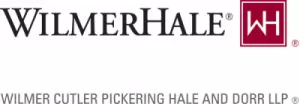- within Environment topic(s)
Precedential and Key Federal Circuit Opinions
1. ECOFACTOR, INC. v. GOOGLE LLC [OPINION] (2023-1101, 5/21/2025) (Lourie, Dyk, Prost, Reyna, Taranto, Chen, Hughes, Stoll, Stark)
Moore, C.J. The en banc Court reversed the district court's denial of Google's motion for a new trial and remanded for a new trial on damages. The en banc Court concluded the opinion of EcoFactor's damages expert was unreliable and therefore inadmissible under Federal Rule of Evidence 702 and Daubert because the expert's opinion that the relied-upon licenses showed industry acceptance of an $X per unit royalty rate was not based on sufficient facts or data.
Based on three lump-sum settlement licenses between EcoFactor and separate licensees, the damages expert opined that the lump-sum amounts reflected an $X per unit rate applied to their sales and that Google should pay the same rate as comparable licenses. The en banc Court held the plain language of the licenses did not provide a basis for the expert to opine that the licensees agreed to the $X rate as a reasonable royalty. Further, the testimony of EcoFactor's CEO, which the damages expert relied upon, that the $X rate was applied to calculate the lump-sum payment amounts was not supported by any record evidence of the licensee's actual or projected sales data. Finally, the en banc Court determined that additional record evidence was not relevant to the inquiry at hand because EcoFactor's damages expert did not rely on such evidence.
The en banc Court rejected the argument that the en banc Court was statutorily improper under 28 U.S.C. § 46(c) because it consisted of fewer than all judges in regular active service. The Court explained that the remedy of temporary suspension under the Judicial Conduct and Disability Act, 28 U.S.C. § 354(a)(2)(A), applied not only to panel cases, but also to en banc cases.
The en banc Court reinstated the portions of the panel opinion that pertain to issues other than damages. The panel opinion affirmed the district court's denial of judgment as a matter of law of noninfringement and held the district court's denial of Google's motion for summary judgment of invalidity under 35 U.S.C. § 101 was not appealable.
Judge Reyna and Judge Stark concurred in part and dissented in part.
*WilmerHale represented Apple Inc. as amicus curiae in this appeal.
2. REGENTS OF THE UNIVERSITY OF CALIFORNIA v. BROAD INSTITUTE, INC. [OPINION] (2022-1594, 2022-1653, 5/12/2025) (Reyna, Hughes, Cunningham)
Reyna, J. The Court affirmed-in-part, vacated-in-part, and remanded the Board's decision in a patent interference proceeding between the Regents of the University of California, the University of Vienna, and Emmanuelle Charpentier (collectively "Regents") and the Broad Institute, Massachusetts Institute of Technology, and the President and Fellows of Harvard College (collectively "Broad"). The Board concluded that Broad had priority over Regents with respect to a CRISPR-Cas9 system that contains a single-guide RNA ("sgRNA") that edits or cleaves DNA in eukaryotic cells. Regents appealed the Board's decisions on conception and written description.
The Board determined that Regents did not prove conception of the invention prior to Broad's actual reduction to practice in October 2012, because Regents' scientists did not know their CRISPR-Cas9 system would produce the effects on genes in a eukaryotic cell. On appeal, the Court held that the Board legally erred by requiring Regents' scientists to know their invention would work to prove conception, thereby conflating the distinct legal standards for conception and reduction to practice. The Board erroneously focused on the Regents' scientists' statements expressing uncertainty about whether their experiments had succeeded, without considering whether those statements led to modifications in their experiments that substantively changed their original idea. The Board also erred by refusing to consider whether a skilled artisan could have reduced the invention to practice by achieving the function of editing eukaryotic DNA. The Court vacated and remanded the Board's determination as to conception.
The Board denied Regent's request to be accorded the May 2012 or October 2012 filing dates of its two earliest provisional applications because neither satisfied the written description requirement of 35 U.S.C. § 112. On appeal, the Court affirmed the Board's assessment of written possession because the two earliest provisional applications failed to disclose specific instructions or conditions necessary for CRISPR-Cas9 activity in a eukaryotic cell, or an indication that no specific instructions or conditions were necessary.
3. SIGRAY, INC. v. CARL ZEISS X-RAY MICROSCOPY, INC. [OPINION] (2023-2211, 5/23/2025) (Dyk, Prost, Goldberg)
Goldberg, J. Sigray, Inc. ("Sigray") challenged a Patent Trial and Appeal Board ("Board") inter partes review decision finding claims 1-6 of Carl Zeiss X-Ray Microscopy, Inc.'s ("Zeiss") patent not unpatentable. The challenged patent relates to X-ray imaging systems that incorporate projection magnification. The Jorgensen reference explicitly disclosed all limitations of claim 1 except for the projection magnification limitation reciting "a magnification of the projection x ray stage is between 1 and 10 times." The Board found no inherent disclosure of the projection magnification limitation by Jorgensen, and the Court reversed.
The Court concluded that the Board erroneously construed "between 1 and 10" to exclude small amounts of magnification that were nonetheless between 1 and 10. While the Board stated that it was not engaging in claim construction, the Court found that if the outcome of the Board's analysis establishes the scope and meaning of the claims, then the Board has implicitly construed the claim. The Court also found that the Jorgensen reference's X-ray beams necessarily produced projection magnification over 1, thereby anticipating claim 1. The Court remanded for the Board to determine if the dependent claims would have been obvious in light of this opinion.
The content of this article is intended to provide a general guide to the subject matter. Specialist advice should be sought about your specific circumstances.







